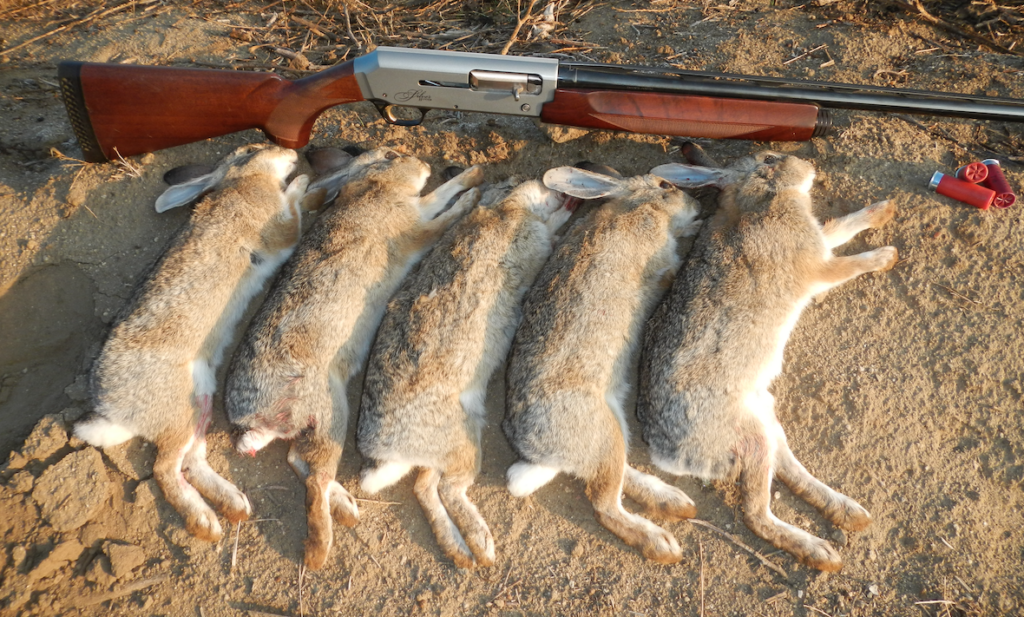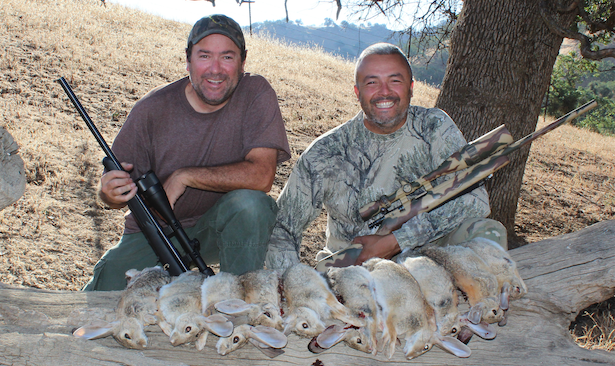
By Tim E. Hovey
When it comes to hunting and the pursuit of game, I would venture a guess that most of us started our hunting careers chasing some sort of small game animal. At 10 years old, my first hunted animal was a rabbit and I have never gotten over the excitement of hunting cottontail rabbits when the weather turns cold.
The natural progression of any activity is to start out with something relatively easy, and as you improve, move on to more challenging targets. However, I’ve noticed that some of the skills you refine while your hunting small game, seamlessly transfers to hunting any animal. All animals, no matter what size, are wired to be supremely cautious when it comes to predators. Being stealthy and moving slow to get into range applies to all animals from rabbits to elk.
California offers a handful of small game opportunities to both the experienced and beginning hunter. Species like the speedy jackrabbit, the tasty cottontail, the cryptic tree squirrel and the ubiquitous ground squirrel are all challenging animals to pursue. The pursuit of these animals should also sharpen your observational habits and scouting techniques for any game.
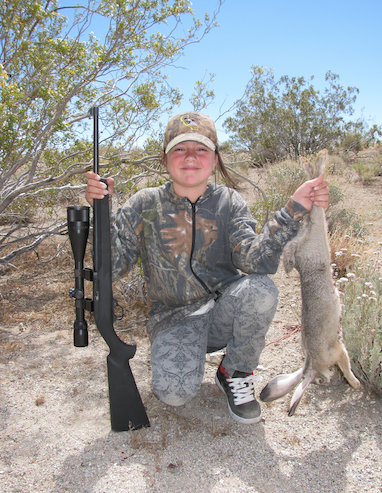
Jackrabbits
For me, nothing compares to chasing these speedsters in the desert when the weather starts to cool. Jackrabbits are far larger than cottontails and often will bust from cover at your feet, hitting a top speed of 30 to 40 MPH almost instantly. During peak seasons, they will litter the terrain like fleas and will present new hunters with plenty of shot opportunities.
Walking through the desert sage with a shotgun is a great way to sharpen your snap shooting. Almost too confident in their hiding spots, jacks will explode from cover when they sense trouble is close. And make no mistake, this is not a whisper-quiet retreat. Jackrabbits literally bust through the brush looking to escape. This is a good time to keep your eyes open and to listen for sudden movement in the surrounding brush. Often, you will hear the departing hare before you see them.
Rabbits are thin-skinned animals, so shot sizes in the 7-8 range will get the job done. This type of hunting will definitely help you practice your shotgun shooting. Frequently, all you’ll get for a shot is a flash of fur racing through the sage. They prefer sage brush habitat near a consistent water source, but can be found miles from water as well. They are active throughout the day, looking to hunker down under brush when it gets hot.
Cottontail Rabbits
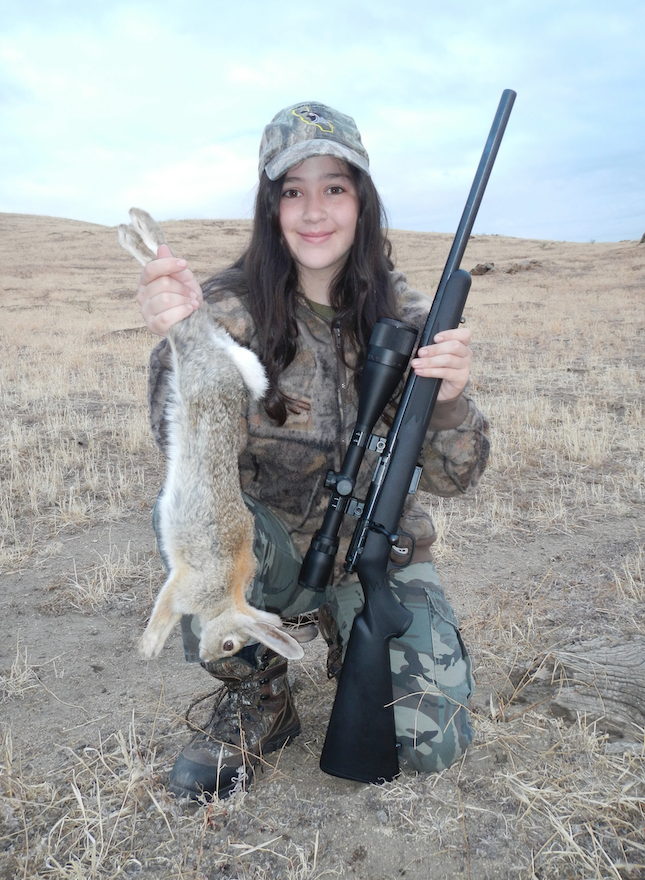
Frequently co-occurring with the jackrabbit, cottontail rabbits are most active in the morning and evening time when the weather is cooler. Much like their larger counterpart, they are abundant in sage brush and areas associated with a permanent water source. Unlike jacks, cottontail rabbits will seldom be far from water.
Cottontail rabbits are also easily hunted with a shotgun, walking through suitable habitat. While they tend to be a little quieter when they dash from cover, they will still make enough noise to draw the attention of savvy hunters. It’s also not unusual to harvest both jacks and cottontails in the same area. Find native vegetation near a water source, and cottontails will be close.
Tree squirrels
When I first got my license and started driving to areas where I could hunt, I began to see grey tree squirrels in the backcountry. I immediately became obsessed with hunting them. Using a scoped .22, I’d search the pine trees looking for movement. One of the first things I noticed is that wherever I found pinecone remnants near the base of trees, I’d find grey tree squirrels.
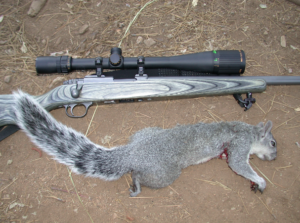
More active in the mornings and evenings, tree squirrels will search for food and travel the high branches of large trees with ease. They are noisy animals, barking and screeching when they feel threatened or detect danger. This voiced aggression will almost always give their location away. This species has a closed area in the southern portion of the state, so check the hunting regulations before you head out.
Ground squirrels
One of the first species I pursued on a very consistent basis as a kid was the common ground squirrel. A ground-dwelling species, they quickly increase in number when conditions are favorable. They dig an immense number of burrows and quickly populate those burrows. This ground-damaging habit puts them at odds with many farmers and landowners.
Active throughout the day, ground squirrels possess an altruistic habit of sounding an alarm when danger is close. Usually, a single individual will bark a warning to the others when predators approach. Once you become familiar with this call, popping a few ground squirrels won’t be difficult. Many landowners and farmers will gladly accept hunter’s assistance in reducing this ground-dwelling varmint.
Another excellent method for taking all these small game species if by setting up in suitable habitat with a scoped rimfire rifle. I prefer the fast and accurate .17 HMR. This round has revolutionized small game hunting by adding distance and amazing accuracy to your hunting tool bag. Using a good set of shooting sticks, a pair of binoculars and a little patience, you can easily add a few small game animals to your bag.
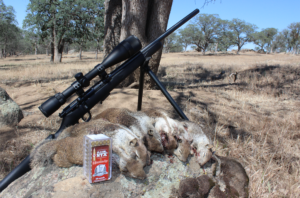
BURROWING PEST – The common ground squirrel is considered a pest to farmers and landowners. Once you know what they sound like, harvesting a handful isn’t difficult. Most landowners will welcome help in controlling these land pests. TIM E. HOVEY PHOTO
I know for a fact that all my overall scouting experience and hunting observations started when I was a young man chasing small game. The foundation of how I hunt anything today started when I was 10 years old. Along with the lessons learned along the way, I have a lifetime of great memories honing my small game hunting skills. I’ve shared those lessons with new hunters, my kids and good friends, and I will never tire of hunting small game with good people.
Revisit your childhood and dust off that rimfire rifle. Even if you’re a little rusty, walking where you walked when you were young will stir the kid in all of us.
